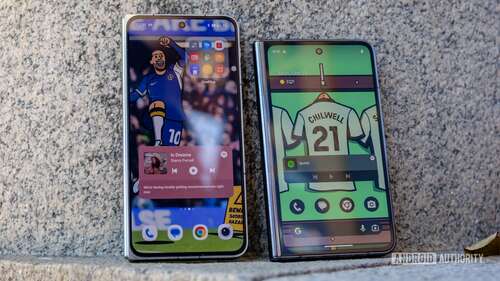There was a time, not too long ago, when Google and Samsung appeared to be at loggerheads over Android. Samsung seldom mentioned Big G during its past launches, and Tizen was intermittently dangled as a breakaway “threat” to the whole Android ecosystem. In a nutshell, these mobile tech titans haven’t always seen eye to eye.
Fast forward to the Samsung Galaxy S24 launch, and you’d be forgiven for thinking the biggest names in the Android space had always been the best of friends. Peel back the branding on the latest Galaxy AI features, and you’ll find Google technology behind some of them. In fact, Samsung even had Googlers up on stage to talk about not just the latest Galaxy S24 but features like Circle to Search, improvements to Messages, and others, that are heading to the Pixel 8 series too. Not forgetting broader initiatives like Gemini Nano that will bring Google’s AI features to even more Android handsets in the near future.
Will closer ties help Google and Samsung better compete with Apple?
0 votes
But there’s good reason for this united front. With Apple claiming the top spot in global phone shipments for the first time, the iPhone is the only major smartphone series, and certainly the only one with global reach, with the wind firmly in its sales. Virtually everyone else is just trying their best to stay afloat. Put simply, this isn’t the time to be squabbling if Android wants to turn the tide on the market leader.
Samsung’s fortunes have been up and down for some time, and while Google may have scored recent wins in the US and selected markets, the Pixel lineup doesn’t ship in anywhere near the numbers needed to make a dent in Apple’s market share. But by their combined powers, perhaps Google and Samsung can take a more meaningful fight to the iPhone.
From AI to RCS, Google and Samsung are working in tandem to loosen Apple’s grip on the US market.
There’s no doubt that the AI capabilities of the new Galaxy S24 series make the phones stand out, but this is actually just the latest result in an increasingly deep collaboration. Recent months have seen Samsung hop aboard Google’s RCS messaging campaign aimed at loosening iMessage’s vice-like grip on the US messaging market. This year, Google merged Nearby Share into Samsung’s Quick Share for the better, and we regularly hear about the XR headset that Samsung, Google, and Qualcomm are supposed to be working on together to presumably go up against Apple’s Vision Pro.
Casting our minds back a little further, Samsung was also instrumental in rejuvenating Wear OS 4 (after Google all but abandoned the platform). Likewise, Android 12L and many of the subsequent foldable features found within Android came about from Samsung’s early experimentations with the new product type, which has since helped shape the excellent Pixel Fold and brilliant OnePlus Open.

Ryan Haines / Android Authority
While some of these initiatives have simply been about closing a chasm with Apple (see Wear OS), others have propelled the partnership well out ahead of Cupertino. There’s no doubt that Google and Samsung are right on the cutting edge when it comes to AI and foldables. Samsung is in its fifth generation of flexy phones while Apple has yet to launch its first, and the two are pushing ahead with generative AI while the iPhone 15 is still dabbling in speech recognition and object detection. While great technology doesn’t automatically result in must-have consumer products, it gives Google, Samsung, and other Android brands a headstart on the next potential breakout product categories.
Google and Samsung’s recent collaborations have uplifted the entire Android ecosystem.
Whether that can turn enough heads to rein in Apple remains to be seen. After all, we know Apple prefers to take its time and still manages to claim to be revolutionary. Still, from a technological standpoint at least, Google and Samsung working more closely together has produced compelling results in the past twelve months, resulting in a healthy choice of great smartphones in the Android ecosystem. Long may it continue.

